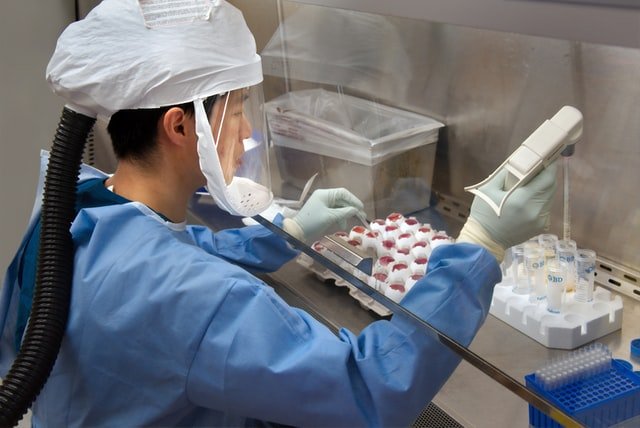Bladder Cancer
- Biotexus
- October 15, 2022
About the bladder, renal pelvis, and ureter
The bladder is a hollow structure in the pelvis that holds pee before urination. The bladder is an important element of the urinary system because of this function. The kidneys, ureters, and urethra are all part of the urinary tract. The renal pelvis is a funnel-shaped portion of the kidney that collects urine and transports it to the ureter. Each kidney has a ureter, which connects to the bladder. The tube that takes urine out of the body is known as the urethra. The urinary system also includes the prostate gland.
The bladder, like the rest of the urinary system, is lined with urothelium, a layer of cells. The muscularis propria, or bladder wall muscles, are separated from this layer of cells by the lamina propria, a thin fibrous band.
About bladder cancer
Bladder cancer develops when healthy cells in the bladder lining, termed urothelial cells, alter and grow out of control, resulting in a tumor. The renal pelvis and ureters are likewise lined by urothelial cells. Upper tract urothelial carcinoma is a kind of urothelial cancer that arises in the renal pelvis and ureters. It is treated in the same way as bladder cancer in the majority of instances, as detailed in this handbook. Tumors can be malignant or noncancerous. A malignant tumor is one that has the potential to develop and spread to other regions of the body. The term “benign tumor” refers to a tumor that can develop but not spread. Bladder tumors that are benign are extremely uncommon.
Types of bladder cancer
- Urothelial cancer : Urothelial cancer (or UCC) accounts for about 90% of all bladder cancers. It also accounts for 10% to 15% of kidney cancer diagnosed in adults. It begins with urothelial cells of the urinary tract. Urothelial carcinoma is also called transitional epithelial cancer or TCC
- Squamous cell carcinoma Squamous epithelial cells develop on the inner wall of the bladder in response to irritation and inflammation. Over time, these cells can become cancerous. Squamous cell carcinoma accounts for about 4% of all bladder cancers.
- Adenocarcinoma : which destroy certain invaders, such as viruses, cells infected by viruses, and some cancer cells
There are also less common types of bladder cancer, such as bladder sarcoma and small cell bladder cancer. Bladder sarcomas often occur in the fat or muscular layer of the bladder. Small cell bladder cancer is a rare type of bladder cancer that is likely to spread to other parts of the body.
Risk Factors
The following factors may raise a person’s risk of developing bladder cancer:
Gender: Men are four times more likely to develop bladder cancer than women, but women are more likely to die of bladder cancer than men. Delayed diagnosis of bladder cancer can also occur in women.
Race: Whites are more than twice as likely to be diagnosed with bladder cancer as blacks, but blacks are twice as likely to die of the disease.
Chronic bladder problems: Bladder cancer can be exacerbated by bladder stones and infections. Bladder cancer is more likely in patients who are paralysed from the waist down, use urine catheters, and have a history of urinary infections.
Cyclophosphamide use: People who have had chemotherapy with cyclophosphamide have a higher risk of developing bladder cancer.
Personal history: People who have had bladder cancer in the past are more likely to acquire it again.
Schistosomiasis: People who have some form of this parasite are more likely to develop squamous cell carcinoma of the bladder. Schistosomiasis occurs in parts of Africa, South America, Southeast Asia, and the Middle East
Arsenic exposure: Arsenic is a naturally occurring chemical that, when ingested in excessive amounts, can cause health concerns. It has been linked to an increased risk of bladder cancer when present in drinking water. The chances of getting exposed to arsenic is dependent on where you live and whether you obtain your water from a well or a system that fulfils arsenic guidelines.
Symptoms
People with bladder cancer may experience the following symptoms and signs. Sometimes, people with bladder cancer do not have any of these changes. Alternatively, the cause of the symptoms may be another non-cancerous condition.
- Blood or blood clots in the urine
- Pain or burning sensation during urination
- Frequent urination
- Feeling the need to urinate many times throughout the night
- Feeling the need to urinate, but not being able to pass urine
- Lower back pain on 1 side of the body
Treatment
Surgery: Surgery is the removal of the tumor and surrounding healthy tissue during surgery. There are different types of surgery for bladder cancer. Your medical team recommends specific surgery based on the stage and severity of the condition.
The types of systemic therapies used for bladder cancer include:
- Chemotherapy
- Immunotherapy
- Targeted therapy
There are two types of chemotherapy that can be used to treat bladder cancer. The type and timing of administration recommended by the doctor depends on the stage of the cancer. Patients should discuss chemotherapy with their doctor before and after surgery
- Cisplatin and gemcitabine
- Carboplatin (available as a generic drug) and gemcitabine
- MVAC, which combines 4 drugs: methotrexate (Rheumatrex, Trexall), vinblastine (Velban), doxorubicin, and cisplatin
- Dose-dense (DD)-MVAC with growth factor support: This is the same regimen as MVAC, but there is less time between treatments and has mostly replaced MVAC
- Docetaxel or paclitaxel (available as a generic drug)
- Pemetrexed (Alimta)
Immunotherapy: TImmunotherapy, also called biological therapy, aims to strengthen the body’s natural defenses to fight cancer. It uses materials made in the body or in the laboratory to enhance, target, or restore the function of the immune system. It can be administered topically or systemically.
Radiation therapy: The use of high-energy x-rays or other particles to eliminate cancer cells is known as radiation therapy. A radiation oncologist is a doctor who specializes in treating cancer patients using radiation treatment. External-beam radiation therapy, which is radiation delivered from a machine outside the body, is the most prevalent method of radiation treatment. Internal radiation treatment, also known as brachytherapy, is a type of radiation therapy that uses implants to deliver radiation. Brachytherapy, on the other hand, is not employed in the treatment of bladder cancer. A radiation therapy regimen, often known as a schedule, is made up of a defined number of treatments administered over a set amount of time.



















